
Embarking on a journey into the world of trading requires more than technical knowledge—it demands an understanding of market psychology, strategy, and the lessons learned by those who navigated the markets before us. This comprehensive guide explores the best books for trading, each offering a unique perspective on trading, from the experiences of successful traders to the impact of technology on market dynamics.
1. “Market Wizards” by Jack D. Schwager
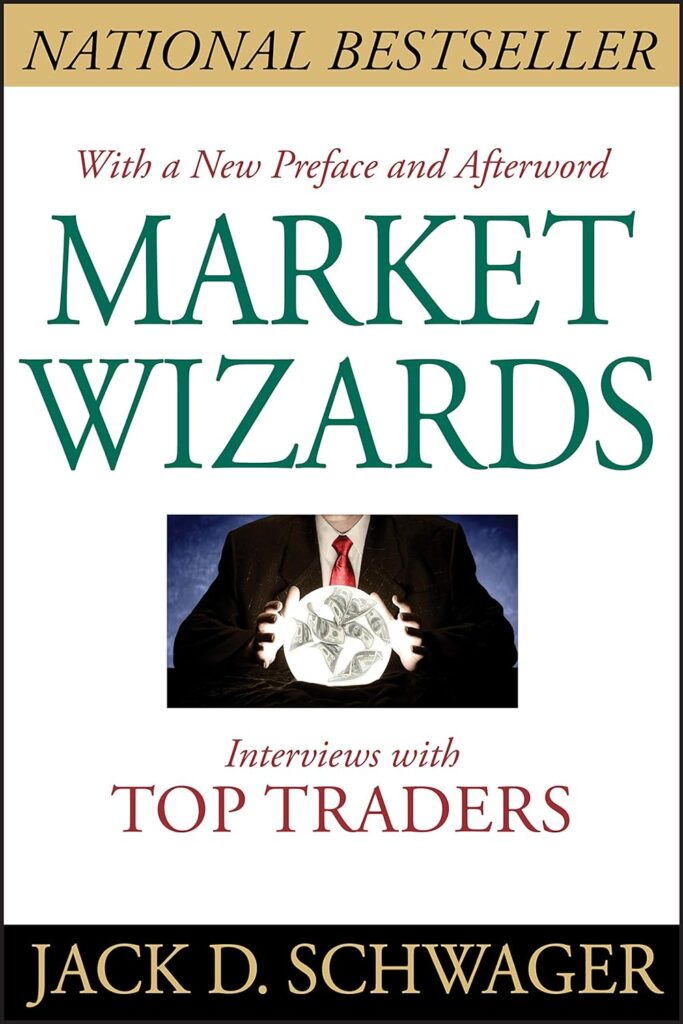
Description:
“Market Wizards” is not your typical trading guide; it’s a captivating collection of interviews where Schwager sits down with market legends to unravel the secrets of their success. From Paul Tudor Jones to Ed Seykota, the book features traders from diverse backgrounds, each with their unique approach to the markets. Schwager skillfully captures the essence of these conversations, presenting a mosaic of trading philosophies that transcends traditional wisdom.
Key Takeaways:
The book is a treasure trove of wisdom for traders at all levels. Readers gain a deep understanding of the mindset, strategies, and risk management practices employed by the interviewed traders. The interviews go beyond technical analysis, touching on the psychological aspects of trading and the ability to adapt to changing market conditions. Each chapter is a masterclass, providing lessons that resonate with both seasoned professionals and those starting their trading journey.
Why You Should Read It:
- Insider Perspectives: “Market Wizards” offers a rare glimpse into the minds of successful traders, allowing readers to understand their decision-making processes, risk tolerance, and the psychological aspects that contribute to their success.
- Diverse Strategies: The book covers a spectrum of trading styles, from trend following to contrarian approaches. This diversity provides readers with the opportunity to explore and identify the strategies that align with their own trading preferences.
- Real-World Examples: The traders’ anecdotes and real-world examples make the book relatable and applicable. The stories of both triumphs and failures offer valuable lessons that can be directly translated into actionable steps for traders.
- Timeless Relevance: Despite being first published in the 1980s, the insights from “Market Wizards” remain relevant in today’s dynamic markets. The principles shared by the traders withstand the test of time, emphasizing the enduring nature of the lessons.
- Inspiration and Motivation: Beyond the technical aspects, the book serves as a source of inspiration. Learning from the journeys of these market wizards instills a sense of motivation and confidence, encouraging readers to persevere in their trading endeavors.
2. “Reminiscences of a Stock Operator” by Edwin Lefèvre
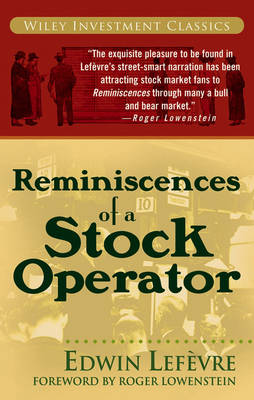
Description:
“Reminiscences of a Stock Operator” is a narrative masterpiece that weaves together the experiences, triumphs, and tribulations of a fictionalized Jesse Livermore. The protagonist, Larry Livingston, provides a lens through which readers witness the ebb and flow of financial markets during the late 19th and early 20th centuries. Lefèvre’s storytelling prowess brings to life the excitement, challenges, and inner workings of Wall Street.
Key Takeaways:
- Market Psychology: The book delves into the psychological intricacies of trading, exploring how emotions such as greed, fear, and overconfidence influence decision-making. It provides valuable lessons on understanding and navigating the psychological aspects of financial markets.
- Adaptability: Livermore’s journey emphasizes the importance of adaptability in trading. Readers witness his evolution as a trader, learning to navigate different market conditions, adapt strategies, and remain resilient in the face of challenges.
- Risk Management: Through the protagonist’s experiences, the book underscores the critical role of risk management. Livermore’s successes and setbacks serve as poignant reminders of the consequences of inadequate risk control and the importance of preserving capital.
- Speculation and Strategy: “Reminiscences” provides a nuanced exploration of speculation as an art. Livermore’s strategic approaches, including trend following and contrarian methods, offer readers a diverse set of trading philosophies to consider.
Why You Should Read It:
- Timeless Relevance: Despite being written in the early 20th century, the lessons from “Reminiscences of a Stock Operator” remain as relevant today as they were during Livermore’s time. The timeless principles underscored in the book continue to resonate with traders navigating contemporary financial markets.
- Narrative Richness: Lefèvre’s narrative style makes complex financial concepts accessible and engaging. The book is not a dry treatise on trading but a captivating story that imparts profound insights in an approachable manner.
- Psychological Insight: For traders seeking to understand the emotional nuances of trading, “Reminiscences” offers a masterclass. Livermore’s struggles with the psychological challenges of the market provide valuable lessons for building emotional resilience.
- Risk Management Lessons: The book serves as a cautionary tale on the consequences of neglecting risk management. Readers learn from Livermore’s experiences, gaining a deeper appreciation for the importance of preserving capital in the face of market uncertainties.
- Inspiration for Traders: The journey of Jesse Livermore, albeit fictionalized, is an inspiring tale of a self-taught trader who navigated the complexities of Wall Street. Traders, whether novices or seasoned professionals, can find motivation in Livermore’s tenacity and ability to learn from the markets.
3. “Flash Boys” by Michael Lewis
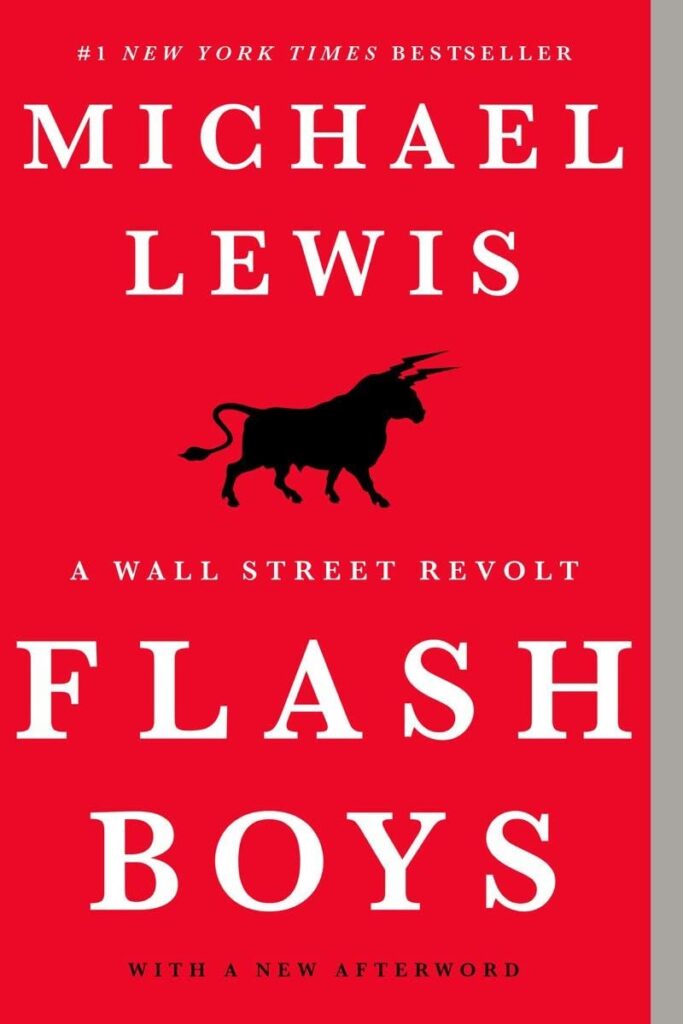
Description:
“Flash Boys” takes readers on a riveting journey through the world of high-frequency trading, exploring the impact of computer algorithms, advanced technology, and the quest for microseconds on traditional market structures. Lewis introduces readers to the individuals who recognized the changes in the market and sought to create a fairer, more transparent system.
Key Takeaways:
- High-Frequency Trading: The book provides a detailed exploration of the rise of HFT and its impact on financial markets. Readers gain insights into the strategies employed by high-frequency traders and the technological arms race for faster execution.
- Market Structure: Lewis delves into the structure of modern financial markets, uncovering the complexities and potential inequities created by technological advancements. The book prompts readers to critically examine the fairness and transparency of market structures.
- Human Stories: Through the personal stories of the protagonists, including Brad Katsuyama and the team at IEX, “Flash Boys” humanizes the impact of technological changes on individuals working within the financial industry. It highlights their struggles and determination to create a more equitable market.
- Ethical Considerations: The book raises ethical questions about the fairness of markets and the potential disadvantages faced by traditional investors in the era of high-frequency trading. It challenges readers to consider the ethical implications of technological advancements in finance.
Why You Should Read It:
- Understanding Market Evolution: For traders seeking to understand the evolution of financial markets in the digital age, “Flash Boys” offers a compelling narrative. It provides a behind-the-scenes look at the changes that have shaped the landscape of modern trading.
- Technological Impact: The book serves as an accessible guide for understanding the technological underpinnings of high-frequency trading. Readers gain insights into the algorithms, speed advantages, and data-driven strategies that characterize modern financial markets.
- Fairness and Transparency: “Flash Boys” encourages readers to contemplate the concept of fairness in markets. It prompts a critical examination of the impact of technological advancements on market transparency and whether these changes benefit all market participants.
- Real-World Implications: The stories of the individuals involved in the quest for fairer markets provide real-world examples of the challenges faced by those seeking to disrupt established norms. Readers can draw inspiration from the determination of these individuals to make a positive impact.
- Ethical Reflection: Beyond the technicalities, the book sparks ethical considerations about the role of technology in finance. Traders and investors are prompted to reflect on the ethical dimensions of market structures and the potential consequences of rapid technological advancements.
4. “Quantitative Trading” by Ernest P. Chan
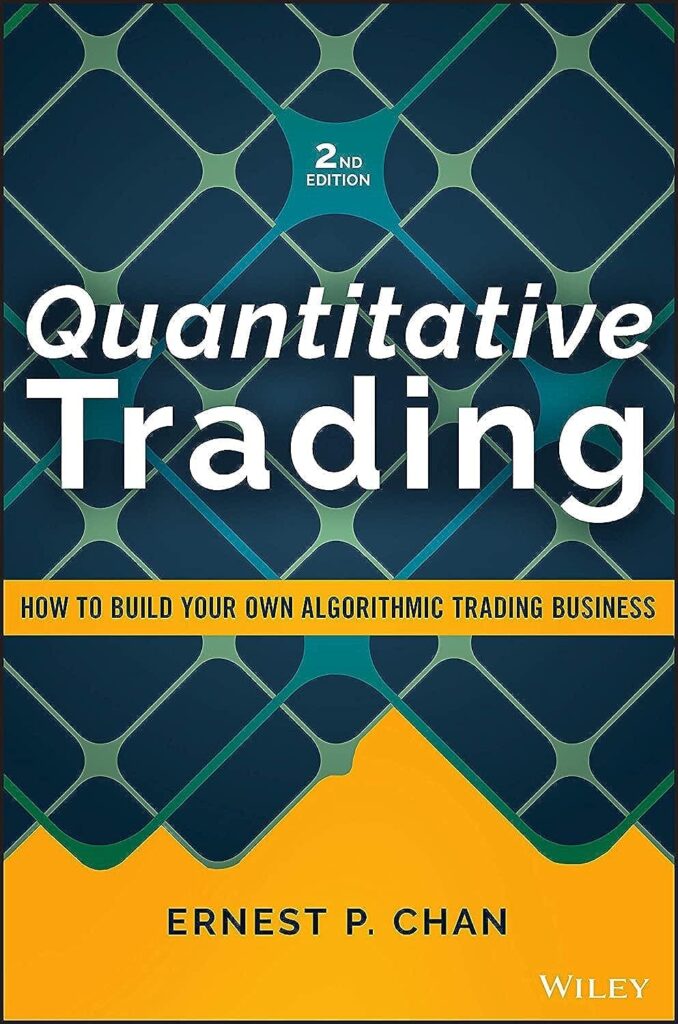
Description:
Ernest P. Chan’s “Quantitative Trading” is a comprehensive guide that demystifies the world of quantitative trading. Chan, a seasoned quant and educator, takes readers on a journey through the fundamental concepts, statistical methodologies, and algorithmic strategies that form the backbone of quantitative trading.
Key Takeaways:
- Quantitative Methods Unveiled: The book introduces readers to the quantitative methods used by professional traders, spanning statistical arbitrage, algorithmic trading strategies, and machine learning applications. It serves as a bridge between traditional trading approaches and advanced quantitative techniques.
- Systematic Approach: “Quantitative Trading” emphasizes the importance of adopting a systematic and disciplined approach to trading. Readers gain insights into the design and implementation of trading systems, leveraging data-driven models for decision-making.
- Risk Management: Chan places a significant emphasis on risk management within quantitative trading strategies. Readers learn how to build robust risk models, allocate capital effectively, and implement safeguards to protect against unforeseen market events.
- Practical Guidance: The book goes beyond theoretical concepts, offering practical guidance on implementing quantitative strategies in real-world trading scenarios. Chan provides code snippets, examples, and case studies to facilitate a deeper understanding of the concepts discussed.
Why You Should Read It:
- Quantitative Literacy: For traders seeking to enhance their quantitative literacy, “Quantitative Trading” serves as an invaluable resource. The book breaks down complex mathematical concepts into accessible explanations, making it suitable for both novice and experienced traders.
- Algorithmic Trading Insights: The book provides a holistic understanding of algorithmic trading, from strategy development to execution. Traders gain insights into the mechanics of systematic trading and how algorithms can be harnessed to capitalize on market inefficiencies.
- Risk-Aware Trading: “Quantitative Trading” places a strong emphasis on risk management principles within the quantitative framework. Readers learn how to construct portfolios that are resilient to market fluctuations and how to navigate the challenges of risk in algorithmic trading.
- Applicability to Real-World Trading: Chan’s practical approach ensures that the concepts discussed are directly applicable to real-world trading scenarios. Traders can take the knowledge gained from the book and implement it in their own quantitative trading strategies.
- Bridge Between Theory and Practice: The book effectively bridges the gap between theoretical concepts and practical application. Whether you are a quant enthusiast or a trader looking to integrate quantitative techniques into your strategy, Chan’s work provides a seamless transition from theory to practice.
5. “The Man Who Solved the Market” by Gregory Zuckerman
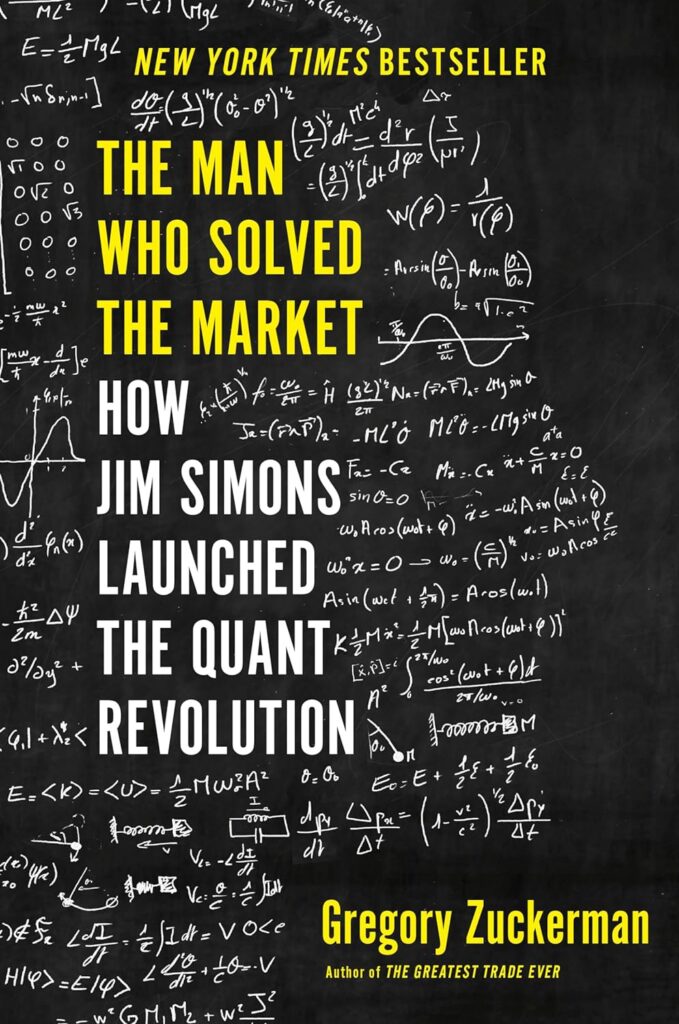
Description:
“The Man Who Solved the Market” delves into the life of Jim Simons, a mathematician and former codebreaker, who applied his analytical prowess to financial markets. Gregory Zuckerman takes readers behind the scenes of Renaissance Technologies, revealing the secretive world of quantitative trading and the unparalleled success achieved by Simons and his team.
Key Takeaways:
- Quantitative Revolution: The book explores the rise of quantitative trading and the transformative impact of mathematical models on financial markets. Readers gain insights into how Renaissance Technologies pioneered the use of algorithms and data analysis to achieve unparalleled returns.
- Jim Simons’s Approach: Zuckerman delves into Simons’s unique approach to trading, which involved hiring top-notch mathematicians and scientists to develop intricate trading strategies. The book provides a glimpse into the innovative thinking that allowed Renaissance to consistently outperform traditional hedge funds.
- Challenges and Triumphs: From the early challenges faced by Simons to the fund’s triumphs in generating extraordinary returns, the book offers a balanced narrative. Readers witness the evolution of Renaissance Technologies and the adaptive strategies that propelled it to the pinnacle of the hedge fund industry.
- Secrecy and Intrigue: “The Man Who Solved the Market” unveils the secretive nature of Renaissance Technologies, showcasing the tight-lipped culture that surrounded its operations. The book explores the challenges of maintaining a competitive edge in an industry known for its guarded strategies.
Why You Should Read It:
- Quantitative Trading Insights: For those intrigued by the quantitative side of trading, this book provides a rare and in-depth exploration. Readers gain a profound understanding of how mathematical models and data analysis can be leveraged to gain a competitive edge in financial markets.
- Jim Simons’s Legacy: “The Man Who Solved the Market” is not just a story about trading; it’s a biography of a visionary. Readers are introduced to the mind of Jim Simons, his approach to problem-solving, and the legacy he created with Renaissance Technologies.
- Innovation in Finance: The book offers a front-row seat to witness the innovation that occurred within Renaissance Technologies. For traders and finance enthusiasts, it provides a fascinating account of how groundbreaking ideas and unconventional thinking can redefine an entire industry.
- Real-World Application: Beyond the theoretical, the book explores how quantitative strategies were practically applied to navigate financial markets. Readers gain insights into the challenges faced by Renaissance and the solutions that propelled it to success.
- Inspiration for Traders: “The Man Who Solved the Market” serves as an inspiration for traders and investors looking to push the boundaries of conventional thinking. Simons’s journey encourages readers to explore new avenues and embrace innovation in their approach to the markets.
6. “Algorithmic Trading” by Ernest P. Chan
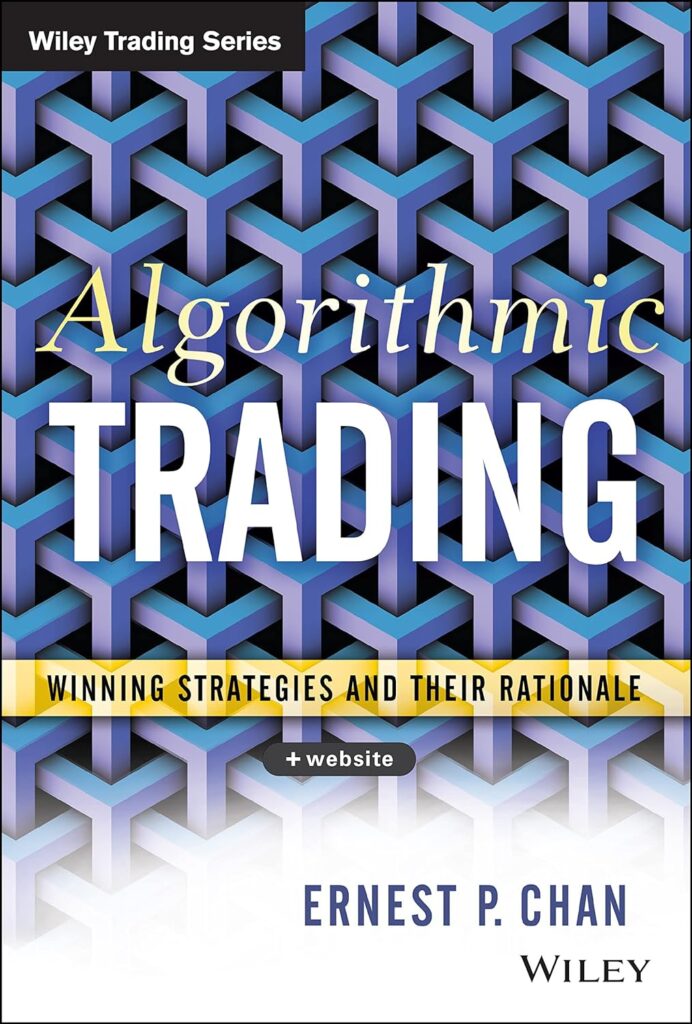
Description:
“Algorithmic Trading” is a thorough exploration of the principles, strategies, and practical implementation of algorithmic trading. Ernest P. Chan, takes readers on a journey through the algorithmic landscape, offering a blend of theoretical concepts and hands-on guidance for designing and implementing algorithmic strategies.
Key Takeaways:
- Algorithmic Strategies: The book delves into a variety of algorithmic trading strategies, from statistical arbitrage to machine learning applications. Readers gain a comprehensive understanding of the diverse approaches that can be employed in algorithmic trading.
- Risk Management in Algorithmic Trading: Chan places a strong emphasis on risk management within the context of algorithmic trading. Traders learn how to construct robust risk models, manage portfolio risk, and ensure the longevity of their algorithmic trading systems.
- Implementation Guidance: “Algorithmic Trading” goes beyond theory, providing practical guidance on implementing algorithmic strategies. Chan offers code snippets, examples, and case studies, empowering readers to translate concepts into tangible trading systems.
- Market Microstructure: The book explores the intricacies of market microstructure, shedding light on the dynamics of order flow, market impact, and liquidity. Understanding these concepts is crucial for designing algorithmic strategies that operate effectively in real-world market conditions.
Why You Should Read It:
- Comprehensive Algorithmic Education: For traders aspiring to delve into the world of algorithmic trading, this book offers a comprehensive education. Chan covers a broad spectrum of strategies and concepts, making it suitable for both novice and experienced traders.
- Risk-Aware Algorithmic Trading: “Algorithmic Trading” places risk management at the forefront of algorithmic strategy development. Traders gain insights into the importance of preserving capital and maintaining a disciplined approach, essential elements for long-term success.
- Practical Implementation: The book provides actionable insights for implementing algorithmic strategies. Whether you are a quant developer or a trader looking to automate your approach, Chan’s guidance offers a bridge between theory and the practicalities of algorithmic trading.
- Market Insight: By exploring market microstructure, the book equips traders with a deeper understanding of how markets operate. This insight is crucial for designing algorithms that adapt to the nuances of different asset classes and market conditions.
- Diverse Algorithmic Strategies: “Algorithmic Trading” presents a diverse array of strategies, allowing readers to explore and choose approaches that align with their trading preferences. This diversity caters to a broad audience with varied interests in algorithmic trading.
7. “The Big Short” by Michael Lewis
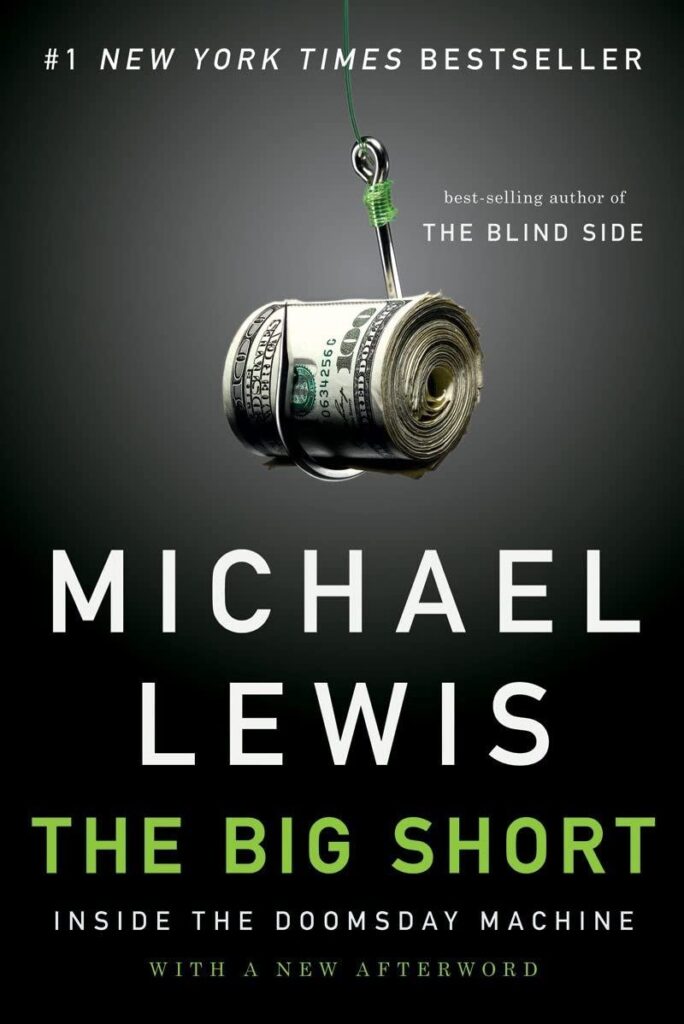
Description:
“The Big Short” is a narrative nonfiction masterpiece that explores the events leading up to the 2008 financial crisis. Michael Lewis introduces readers to a cast of characters—eccentric investors and financial outsiders—who recognized the flaws in the subprime mortgage market and, against prevailing sentiment, positioned themselves to capitalize on the impending collapse.
Key Takeaways:
- Mortgage Market Complexities: Lewis demystifies the intricacies of the mortgage market, revealing how financial instruments like mortgage-backed securities and collateralized debt obligations played pivotal roles in the crisis. Readers gain insights into the systemic risks that underlay the housing bubble.
- Contrarian Thinking: “The Big Short” showcases the contrarian thinking of a small group of investors who saw the impending disaster when most of the financial world remained oblivious. The book delves into their journeys, struggles, and the challenges they faced in convincing others of the impending crisis.
- Financial Innovation and Risks: The narrative explores the innovative financial instruments created by Wall Street and the inherent risks they concealed. Lewis dissects the disconnect between the perceived safety of these complex financial products and the underlying fragility of the housing market.
- Individual and Institutional Impact: The book not only examines the impact of the crisis on financial institutions but also delves into the personal stories of those who foresaw the collapse and positioned themselves accordingly. It offers a human perspective on the consequences of financial excess.
Why You Should Read It:
- Accessible Financial Journalism: Michael Lewis’s storytelling prowess makes complex financial concepts accessible to a wide audience. “The Big Short” serves as an entry point for readers looking to understand the intricacies of the 2008 financial crisis without delving into technical jargon.
- Contrarian Investment Insights: For investors and traders, the book offers insights into the value of contrarian thinking and independent analysis. The protagonists of “The Big Short” provide a compelling example of how challenging conventional wisdom can lead to extraordinary financial success.
- Understanding Financial Risks: The book serves as a cautionary tale about the risks inherent in financial innovation and the consequences of overlooking systemic vulnerabilities. Readers gain a deeper understanding of how seemingly sophisticated financial instruments can hide underlying fragilities.
- Human Stories Amid Crisis: Beyond financial analysis, “The Big Short” humanizes the crisis by portraying the individuals who navigated and even profited from the collapse. It adds a human dimension to the impersonal narrative of financial crises.
- Relevance to Contemporary Finance: The themes explored in “The Big Short” remain relevant to contemporary finance, serving as a reminder of the potential pitfalls associated with complex financial instruments and the importance of scrutiny in financial markets.
8. “How to Trade In Stocks” by Jesse Livermore
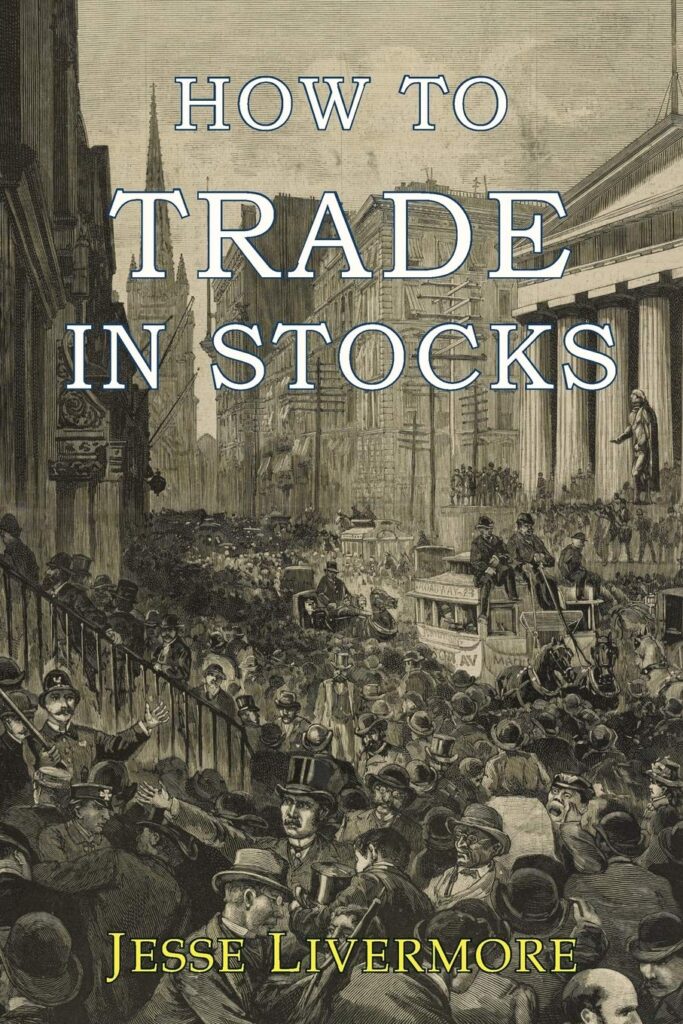
Description:
“How to Trade In Stocks” is Livermore’s treatise on the art of stock trading, drawing from his personal experiences and triumphs in the early 20th century markets. Livermore shares his strategies, principles, and timeless lessons, providing readers with a glimpse into the mindset of one of the most successful stock traders in history.
Key Takeaways:
- Technical Analysis Prowess: Livermore’s book delves into the realm of technical analysis, showcasing his mastery of chart patterns, trends, and market dynamics. Readers gain insights into Livermore’s approach to reading the tape and identifying optimal entry and exit points.
- Psychological Insights: The book goes beyond technicalities, offering profound psychological insights into Livermore’s mindset. Readers learn about the importance of discipline, emotional control, and the ability to adapt to changing market conditions—factors crucial for success in trading.
- Risk Management Strategies: Livermore emphasizes the significance of risk management in trading. His lessons on preserving capital, setting stop-loss orders, and managing position sizes underscore the importance of protecting oneself from significant losses.
- Market Timing Techniques: Livermore’s book provides valuable lessons on market timing, illustrating how he anticipated major market moves and positioned himself accordingly. Readers gain insights into Livermore’s approach to identifying trends and market reversals.
Why You Should Read It:
- Historical Trading Wisdom: “How to Trade In Stocks” offers a glimpse into the historical roots of stock trading. Livermore’s experiences in the early 20th century provide a foundation for understanding the evolution of trading principles that still hold relevance today.
- Timeless Trading Principles: Livermore’s principles are timeless and extend beyond the era in which he traded. Readers can extract enduring lessons on technical analysis, risk management, and the psychological aspects of trading that are applicable in contemporary markets.
- Insights from a Market Wizard: Jesse Livermore is regarded as a market wizard, and his insights are invaluable. Traders, whether novices or seasoned professionals, can benefit from understanding Livermore’s approach to reading markets and making informed decisions.
- Practical Application: Livermore doesn’t just offer theoretical concepts; he provides practical guidance that traders can apply. The book is rich with examples and anecdotes that illustrate Livermore’s strategies in action.
- Emphasis on Emotional Control: Livermore’s emphasis on emotional control is particularly relevant. In an industry often fraught with emotional highs and lows, traders can glean valuable lessons from Livermore’s ability to maintain composure amid market fluctuations.
Conclusion
In conclusion, this compilation of trading books offers a diverse and enriching exploration of the multifaceted world of trading. Whether you’re interested in gleaning insights from the experiences of successful traders, understanding the impact of technology on markets, or incorporating quantitative techniques into your strategy, each book provides valuable lessons that can contribute to your growth as a trader. Consider these books as essential companions on your journey to mastering the art and science of trading.



